#Maria Clotilde of Savoy
Text


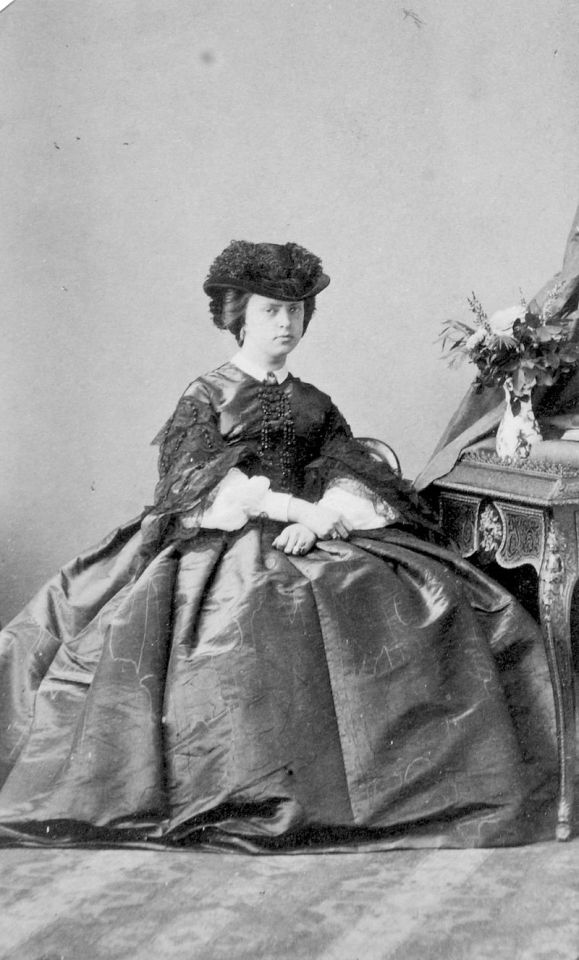


Royal Birthdays for today, March 2nd:
Robert II, King of Scots, 1316
Margaret of Mosbach, Countess Palatine, 1432
Maria Clotilde of Savoy, Princess Napoleon, 1843
Takako Shimazu, Japanese Royal, 1939
Prince Oscar, Duke of Skåne, 2016
#robert ii#prince oscar#takako shimazu#Maria Clotilde of Savoy#royal birthdays#long live the queue#Margaret of Mosbach
7 notes
·
View notes
Text

The Tablet
The Death of Queen Maria Pia
Sunday, July 9, 1911
The curtain went down this week on another act of the Portuguese tragedy when Queen Maria Pia died in the Castle of Stupinigi. The news came as a great surprise to the public of Rome, following as it did within ten days of the death of Queen Maria Pia's sister, the Princess Clotilde, and coming so suddenly that the people generally were unaware that the Queen was seriously ill. June 4, last saw what was meant to be the apotheosis in Rome of Victor Emmanuel when his monument was inaugurated in the new Foro Italico, and that event throws inevitably into strong relief the hard destiny that has pursued the members of his own family. Just eleven years ago his son and successor, King Humbert I, was assassinated by an anarchist at Monza; one of his daughters, after witnessing the murder of her son and grandson in the streets of Lisbon, and earning the title of the Niobe of the House of Savoy, returned to die in exile in her own country; another, who was to have perpetuated the Napoleonic dynasty, saw the French Empire go to pieces under her eyes, and also returned home to live in solitude for the rest of her days.
Queen Maria Pia was the god daughter of Pius IX, and that Pontiff had always shown a deep interest in her career, even when it came to be generally believed that her influence in Portugal was exercised in favor of the enemies of religion. Last November, on returning to Italy, she gave an interview to the Tribuna of Rome in which, speaking of clericalism and anti-clericalism, she was reported to have said: “I do not trouble myself about priests; I do not go to Mass; I do not speak of religion, and I do not like people to speak to me of it. What more can people want?” There is every reason to believe when the unhappy Queen uttered these words her reason had been impaired by the terrible events through which she had passed, but it is painful to have to add that though a priest had been sent for when her last illness took a really serious turn, and though he was kept waiting for hours in an antechamber, he was not called to administer the consolations of religion until the royal patient lost consciousness and was in her agony – thanks to the orders of the doctors.
2 notes
·
View notes
Text
Partial List of Royal Saints
Saint Abgar (died c. AD 50) - King of Edessa, first known Christian monarch
Saint Adelaide of Italy (931 - 999) - Holy Roman Empress as wife of Otto the Great
Saint Ælfgifu of Shaftesbury (died 944) - Queen of the English as wife of King Edmund I
Saint Æthelberht of Kent (c. 550 - 616) - King of Kent
Saint Æthelberht of East Anglia (died 794) - King of East Anglia
Saint Agnes of Bohemia (1211 - 1282) - Bohemian Princess, descendant of Saint Ludmila and Saint Wenceslaus, first cousin of Saint Elizabeth of Hungary
Saint Bertha of Kent (c. 565 - c. 601) - Frankish Princess and Queen of Kent as wife of Saint Æthelberht
Saint Canute (c. 1042 - 1086) - King of Denmark
Saint Canute Lavard (1096 - 1131) - Danish Prince
Saint Casimir Jagiellon (1458 - 1484) - Polish Prince
Saint Cormac (died 908) - King of Munster
Saint Clotilde (c. 474 - 545) - Queen of the Franks as wife of Clovis I
Saint Cunigunde of Luxembourg (c. 975 - 1033) - Holy Roman Empress as wife of Saint Henry II
Saint Edmund the Martyr (died 869) - King of East Anglia
Saint Edward the Confessor (c. 1003 - 1066) - King of England
Saint Edward the Martyr (c. 962 - 978) - King of the English
Saint Elesbaan (Kaleb of Axum) (6th century) - King of Axum
Saint Elizabeth of Hungary (1207 - 1231) - Princess of Hungary and Landgravine of Thuringia
Saint Elizabeth of Portugal (1271 - 1336) - Princess of Aragon and Queen Consort of Portugal
Saint Emeric (c. 1007 - 1031) - Prince of Hungary and son of Saint Stephen of Hungary
Saint Eric IX (died 1160) - King of Sweden
Saint Ferdinand (c. 1199 - 1252) - King of Castile and Toledo
Blessed Gisela of Hungary (c. 985 - 1065) - Queen Consort of Hungary as wife of Saint Stephen of Hungary
Saint Helena (c. 246 - c. 330) - Roman Empress and mother of Constantine the Great
Saint Henry II (973 - 1024) - Holy Roman Emperor
Saint Isabelle of France (1224 - 1270) - Princess of France and younger sister of Saint Louis IX
Saint Jadwiga (Hedwig) (c. 1373 - 1399) - Queen of Poland
Saint Joan of Valois (1464 - 1505) - French Princess and briefly Queen Consort as wife of Louis XII
Blessed Joanna of Portugal (1452 - 1490) - Portuguese princess who served as temporary regent for her father King Alfonso V
Blessed Karl of Austria (1887 - 1922) - Emperor of Austria, King of Hungary, King of Croatia, and King of Bohemia
Saint Kinga of Poland (1224 - 1292) - Hungarian Princess, wife of Bolesław V of Poland and niece of Saint Elizabeth of Hungary
Saint Ladislaus (c. 1040 - 1095) - King of Hungary and King of Croatia
Saint Louis IX (1214 - 1270) - King of France
Saint Ludmila (c. 860 - 921) - Czech Princess and grandmother of Saint Wenceslaus, Duke of Bohemia
Blessed Mafalda of Portugal (c. 1195 - 1256) - Portuguese Princess and Queen Consort of Castile, sister of Blessed Theresa of Portugal
Saint Margaret of Hungary (1242 - 1270) - Hungarian Princess, younger sister of Saint Kinga of Poland and niece of Saint Elizabeth of Hungary
Saint Margaret of Scotland (c. 1045 - 1093) - English Princess and Queen Consort of Scotland
Blessed Maria Cristina of Savoy (1812 - 1836) - Sardinian Princess and Queen Consort of the Two Sicilies
Saint Matilda of Ringelheim (c. 892 - 968) - Saxon noblewoman and Queen of East Francia as wife of Henry I
Saint Olaf (c. 995 - 1030) - King of Norway
Saint Olga of Kiev (c. 900 - 969) - Grand Princess of Kiev and regent for her son Sviatoslav I, grandmother of Saint Vladimir the Great
Saint Oswald (c. 604 - 642) - King of Northumbria
Saint Radegund (c. 520 - 587) - Thuringian Princess and Frankish Queen
Saint Sigismund of Burgundy (died 524) - King of the Burgundians
Saint Stephen of Hungary (c. 975 - 1038) - King of Hungary
Blessed Theresa of Portugal (1176 - 1250) - Portuguese Princess and Queen of León as wife of King Alfonso IX, sister of Blessed Mafalda
Saint Vladimir the Great (c. 958 - 1015) - Grand Prince of Kiev and grandson of Saint Olga of Kiev
32 notes
·
View notes
Text

Maria Clotilde of Savoy (1843 – 1911) was born in Turin to Vittorio Emanuele II, later King of Italy and his first wife, Adelaide of Austria. She was the wife of Prince Napoléon-Jérôme Bonaparte.
1 note
·
View note
Photo

Maria Clotilde of Savoy (2 March 1843 – 25 June 1911) was born in Turin to Vittorio Emanuele II, later King of Italy and his first wife, Adelaide of Austria. She was the wife of Napoléon Joseph Charles Paul Bonaparte. She is venerated in the Catholic Church, having been declared Servant of God by Pope Pius XII.
#Maria Clotilde of Savoy#House Savoy#XIX century#XX century#people#portrait#photo#photography#Black and White
0 notes
Photo

Clotilde of Savoy with her three children: Napoléon Victor, Louis, and Maria Letizia, dated 1867
#princess clotilde of savoy#1860s#french royal family#italian royal family#house of savoy#house of bonaparte#napoleon victor bonaparte#prince louis bonaparte#maria letizia bonaparte#photograph#victorian
10 notes
·
View notes
Photo
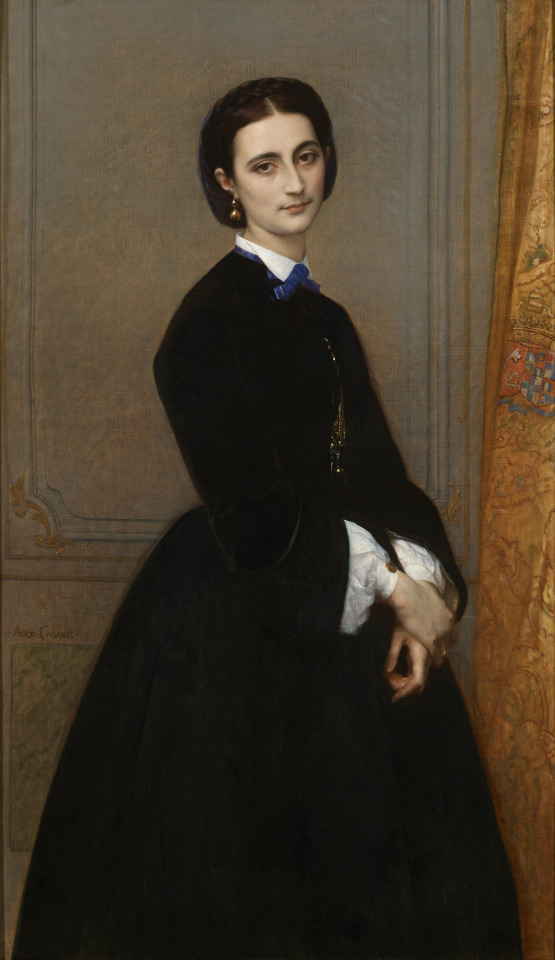
ab. 1863 Alexandre Cabanel - Victoire de Clermont-Tonnerre, lady-in-waiting of Princess Maria Clotilde of Savoy
(Herner & Co)
283 notes
·
View notes
Photo
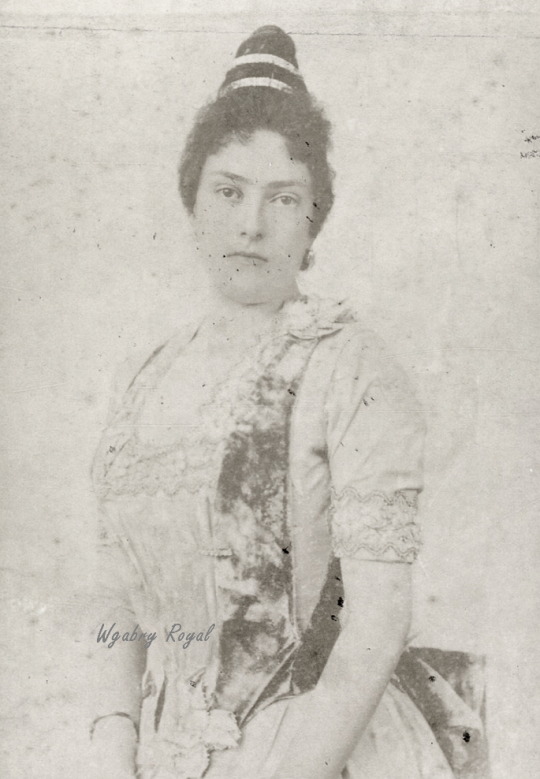
Maria Letizia Bonaparte was one of three children born to Prince Napoléon and his wife Princess Maria Clotilde of Savoy. She became Duchess of Aosta by marrying her uncle Amedeo di Savoia
14 notes
·
View notes
Photo


How do you solve a problem like [naming all your daughters] “Maria”?
or: Please stop referring casually to Marie Antoinette as “Marie”
I’ve noticed that a lot of people on forums, in comments sections, and in historical fiction refer to Marie Antoinette as simply “Marie,” as if “Antoinette” was some kind of title or label. But “Marie” by itself...wasn’t her name, not really. While the names of all Empress Maria Theresa’s daughters did begin with “Maria,” they were called either by their second name or by a family nickname. Maria Elisabeth, for instance, was known as “Liesl,” a German nickname for Elisabeth, and Maria Carolina went by “Charlotte.”
Marie Antoinette was, as a child, called Antonia or “Antoine,” and she would have been referred as “Antoinette,” the French version of this name, upon her arrival in France. Many of her female in-laws also bore the name “Marie,” including her sisters-in-law Princess Clotilde (Marie Adélaïde Clotilde), the countesses of Provence (Marie Joséphine of Savoy) and d’Artois (Maria Theresa of Savoy), and of course her own daughter (Marie-Thérèse Charlotte). It would therefore have been no more practical to call her just “Marie” in France than it would’ve been to call her only “Maria” in Austria!
Above, you can see portraits of Antionette and all of her sisters who survived infancy as well as what names their family used for them. (See the full, unedited Liotard portraits here.)
#marie antoinette#maria theresa#habsburg#empress maria theresa#this isn't important just a pet peeve lol#when I read a line of dialogue and Louis calls Antoinette 'Marie' I cringe because.........no probs not#but what do I know I wasn't there I guess
341 notes
·
View notes
Photo

Queen Maria Theresa of Sardinia’s Pink Tourmaline Tiara
Find out more at Tiara Mania
#Italy#Italian Royal Family#tiara#Queen Maria Theresa#Savoy#Princess Marina#Savoia#Clotilde Courau#Princess Clotilde#pink tourmaline#tourmaline#pink#tiaras#diadem#diadems#royal tiaras#jewels#royal jewels#royal#royals#royalty#jewellery#jewelry#crown#crowns#crown jewels
235 notes
·
View notes
Photo

Princess Marie Clotilde Bonaparte, née Princess of Savoy, with her three children, Victor, Louis and Maria Letizia in 1867.
#Princess Marie Clotilde Bonaparte#Princess Napoleon#Princess Marie Clotilde of Savoy#Princess Victor Napoelon#royalty#history#Princess#Napoelon#Bonaparte#Savoy
22 notes
·
View notes
Photo


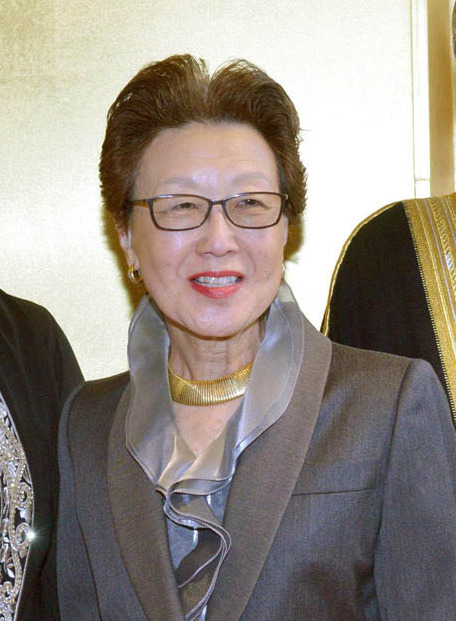

Royal Birthdays for today, March 1st:
Robert II, King of Scots, 1316
Maria Clotilde of Savoy, Princess Napoleon, 1843
Takako Shimazu, Japanese Royal, 1939
Prince Oscar, Duke of Skåne, 2016
7 notes
·
View notes
Photo





Today in History - March 2, 1843. Royal Palace, Turin, Italy. Princess Maria Clotilde of Savoy is born.
Daughter of Vittorio Emanuele II, later King of Italy and of his first wife, Adelaide of Austria.
When she was 16 years old she married with Napoléon Joseph Charles Paul Bonaparte.
They had three children but the marriage wasn’t happy at all. Clotilde was known for being a bigoted, modest and pious. Charles was known for having a entertainment-filled lifestyle.
She travel with her husband to United States in 1861. The village Savoy at Illinois it’s named in her honor.
On 1878, she went back to Turin with her daughter(Maria Letizia Bonaparte, Duchess of Aosta) after living the last 8th years near Lake Geneva because of the fall of the Second Empire of France.
She was a older sister of Maria Pia of Savoy, Consort Queen of Portugal.
She died in 1911(68 years old) in Moncalieri
#Moncalieri#vittorio emanuele ii#king#queen#italy#iltalia#storia#historia#história#history#geschichte#clotilde#usa#united states#women history#historic#past#memories#today in history#today#march#19th century#1900#1800#women#woman
11 notes
·
View notes
Text
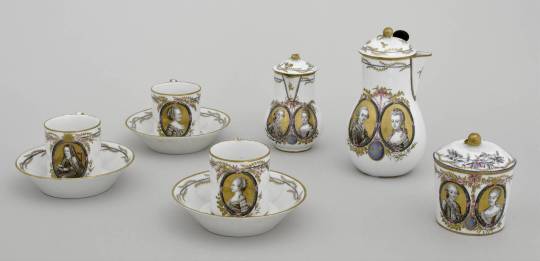
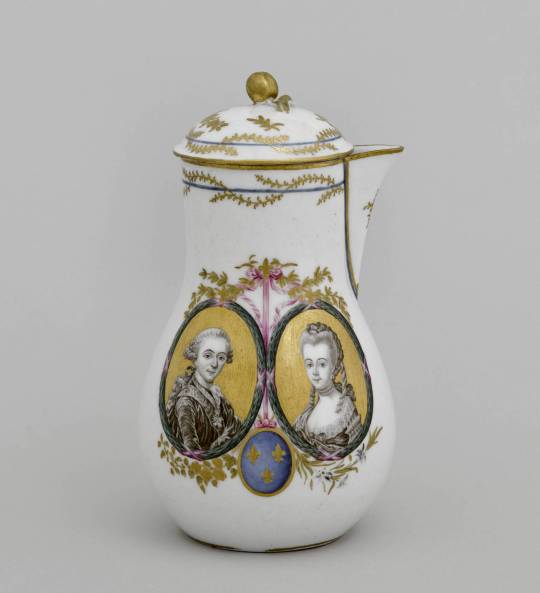

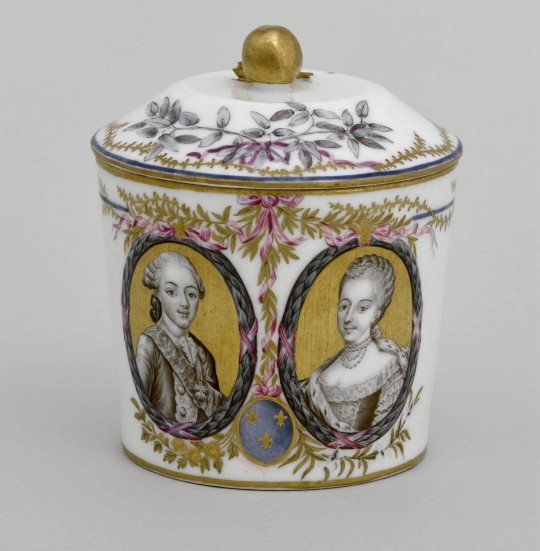
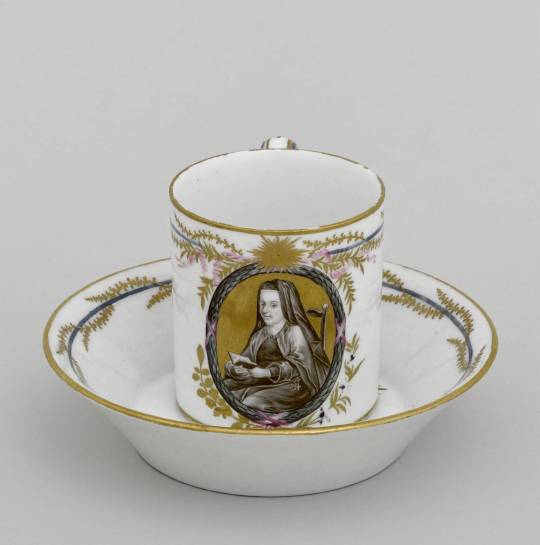
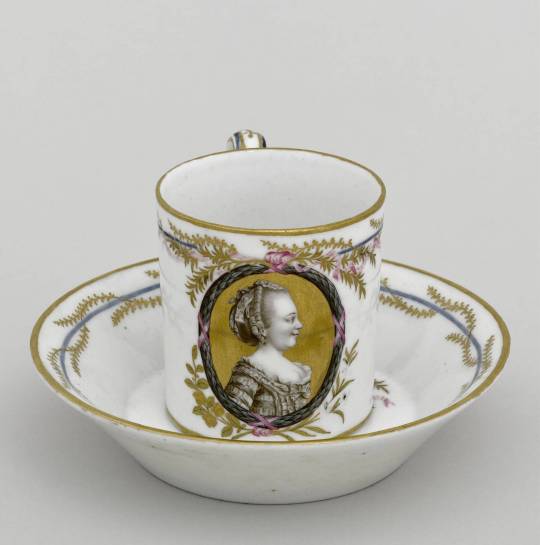
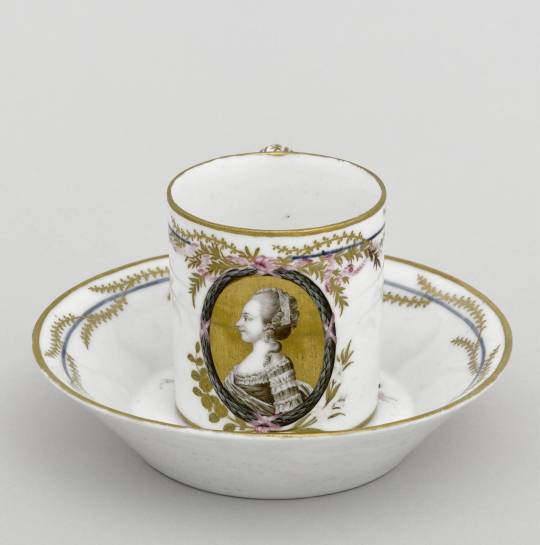
A set of porcelain dishes with images of the French Royal family on it, made in 1778-1779.
The coffee pot has an image of Louis XVI and Marie Antoinette.
The milk jug shows the Comte and Comtesse de Provence.
The sugar pot depicts the Comte and Comtesse d'Artois.
The cups portray 3 princesses: Madame Louise, Madame Clotilde, and Madame Elisabeth.
Source
#marie antoinette#louis xvi#comtesse d'artois#charles x#louis xviii#madame louise#madame clotilde#madame elisabeth#chateau de versailles#marie josephine of savoy#maria theresa of savoy#long live the queue
117 notes
·
View notes
Photo

Maria Clotilde of Savoy and Maria Pia of Savoy, visiting the mausoleum of their mother, Adelaide of Austria.
Source
#Maria Clotilde of Savoy#maria pia of savoy#Adelaide of Austria#house of savoy#savoy#long live the queue
103 notes
·
View notes
Photo

Detail of an engraving celebrating Louis XVI’s accession to the throne in 1774.
Marie Antoinette is represented as Aurora, goddess of the dawn, ushering the sun (Louis XVI, the new monarch) into the world. She’s showering a globe decorated with Fleur de Lis with roses, Bourbon and Habsburg symbols respectively.
Her sisters in law are at the right as the graces, The Comtesse de Provence at the front, with the Comtesse d’Artois, Madame Clotilde, and Madame Elisabeth alongside her, and they offer Marie Antoinette/Aurora a crown of flowers.
#marie antoinette#madame clotilde#madame elisabeth#comtesse d'artois#comtesse de provence#marie josephine of savoy#maria theresa of savoy#18th century#french monarchy#long live the queue
32 notes
·
View notes